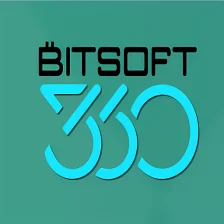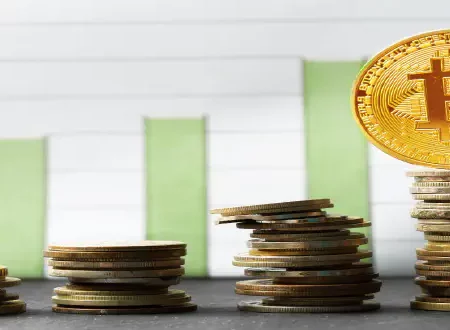In the world of cryptocurrency, Bitcoin remains the undisputed leader. Created in 2009 by an anonymous programmer under the name Satoshi Nakamoto, Bitcoin has revolutionized the concept of digital currency. One of the key aspects that sets Bitcoin apart from traditional forms of money is the process of mining. Bitcoin mining is not just the act of extracting new coins, but an essential component of maintaining the integrity and security of the entire network.
Bitcoin mining involves using specialized computer hardware to solve complex mathematical problems. These problems serve two important purposes: first, they validate and verify transactions on the Bitcoin network, ensuring that each transaction is legitimate. Second, mining is the method through which new Bitcoins are created and introduced into circulation. Miners compete with each other to solve these problems, and the first one to find the solution is rewarded with a certain number of Bitcoins.
The process of Bitcoin mining is often compared to digging for gold. Just like miners dig deep into the earth to find precious metals, Bitcoin miners use powerful computers to search for a specific pattern in the data of a block. This pattern is incredibly difficult to find, requiring a significant amount of computational power and energy. In fact, the Bitcoin network consumes a massive amount of electricity, making it crucial for miners to operate in areas with cheap, renewable energy sources.
Understanding the meaning of Bitcoin mining is not just about the technical aspect, but also the philosophical implications. Bitcoin mining is a decentralized process, meaning that no single entity or authority controls it. This decentralized nature is what makes Bitcoin so resilient and resistant to censorship or control. It also ensures that no one can manipulate the supply of Bitcoins or create new ones out of thin air, as traditional banks and governments do with fiat currencies.
Bitcoin mining is not just a way to earn money or create new coins; it is the backbone of the Bitcoin network. Without miners, the entire system would collapse. As the world becomes increasingly dependent on digital currencies, understanding the intricacies of Bitcoin mining becomes increasingly important.
About Bitcoin Mining
Bitcoin mining is the process of adding new transactions to the Bitcoin blockchain and verifying their authenticity. Miners use powerful computers to solve complex mathematical problems, which helps secure the Bitcoin network and create new bitcoins as a reward.
The process of mining begins with miners collecting pending transactions into blocks. These blocks contain a set number of transactions that need to be verified. Miners compete with each other to solve a mathematical puzzle known as the proof-of-work algorithm. The first miner to solve the puzzle gets to add their block of transactions to the blockchain.
Mining requires significant computational power and energy resources. Miners use specialized hardware, such as ASIC (Application-Specific Integrated Circuit) machines, to perform the necessary calculations. These machines are designed specifically for mining cryptocurrencies like Bitcoin and offer much higher efficiency compared to traditional computer hardware.
Once a miner successfully adds a block to the blockchain, they are rewarded with a certain amount of newly minted bitcoins. This serves as an incentive for miners to continue participating in the mining process and ensures the security and decentralization of the Bitcoin network.
Bitcoin mining is a competitive industry, with miners constantly upgrading their hardware and seeking lower electricity costs to maximize their profits. As the network becomes more secure and the number of bitcoins generated per block decreases over time, mining becomes more challenging and less profitable for individual miners.
| Pros | Cons |
|---|---|
|
|
What is Bitcoin Mining?
Bitcoin mining refers to the process of adding new transactions to the Bitcoin blockchain. It is an essential part of how Bitcoin functions and is responsible for maintaining the security and integrity of the network.
Unlike traditional currencies that are issued by central banks, Bitcoin is a decentralized digital currency. This means that it doesn’t have a central authority controlling its issuance and transactions. Instead, Bitcoin relies on a network of computers, also known as miners, to validate and add new transactions to the blockchain.
Miners use powerful computers to solve complex mathematical problems. By solving these problems, miners are able to confirm the validity of transactions and add them to a block. Each block contains a set of transactions that have been successfully verified by miners.
Once a block is added to the blockchain, it becomes a permanent part of the Bitcoin network. This process is crucial for preventing fraud and double-spending, as each transaction must be validated by multiple miners before it is considered valid.
Miners are incentivized to participate in the mining process through two main mechanisms. The first is the block reward, which is given to the miner who successfully adds a new block to the blockchain. Currently, the block reward is 6.25 bitcoins, but it decreases over time according to a predetermined schedule.
The second mechanism is transaction fees. When someone sends a Bitcoin transaction, they can choose to include a transaction fee. Miners prioritize transactions with higher fees, so including a fee increases the chances of a transaction being included in the next block.
Bitcoin mining requires significant computational power and energy consumption. As such, it has become an industry in itself, with specialized hardware and large-scale mining operations. Despite the challenges, mining remains an essential part of the Bitcoin ecosystem and ensures the security and functionality of the network.
How Does Bitcoin Mining Work?
Bitcoin mining is the process of adding new transactions to the Bitcoin blockchain and securing the network through the use of specialized hardware and software. Miners, who are individuals or groups of individuals, help to process and verify Bitcoin transactions.
Here is how the Bitcoin mining process works:
- Transaction validation: When a new transaction is made, it is broadcasted to the entire Bitcoin network. Miners validate these transactions by ensuring that the sender has enough funds and that the transaction complies with the network rules.
- Creating a new block: Miners collect a group of valid transactions, also known as a block, and compete with each other to solve a mathematical puzzle. The first miner to solve the puzzle is rewarded with newly minted Bitcoins and transaction fees.
- Proof of Work: The puzzle that miners need to solve in order to create a new block is a computationally intensive problem. It requires significant computational power, which is provided by specialized mining hardware called ASICs (Application-Specific Integrated Circuits). Miners need to solve this puzzle by finding a hash that meets certain criteria and is unique.
- Network consensus: Once a miner finds a solution, it is broadcasted to the network and all other miners verify its validity. If the solution is correct, the block is added to the blockchain, and the miner is rewarded. If the solution is incorrect, it is rejected, and the miner needs to start over with a new block.
Bitcoin mining is an essential process for maintaining the security and integrity of the Bitcoin network. It incentivizes miners to act honestly and prevents double-spending, where someone tries to spend the same Bitcoins more than once.
As the Bitcoin network grows, the difficulty of the mining process increases to ensure that new blocks are added to the blockchain at a consistent rate. This difficulty adjustment is done automatically every 2016 blocks based on the total computing power of the network.
Overall, Bitcoin mining plays a crucial role in the decentralized nature of the cryptocurrency by providing a mechanism for transaction verification and securing the network.
The Purpose of Bitcoin Mining
Bitcoin mining serves several important purposes in the Bitcoin network. It is responsible for the creation of new bitcoins, the validation and verification of transactions, and the security of the entire network.
1. Creation of new bitcoins: Bitcoin mining is the process through which new bitcoins are created and introduced into circulation. Miners compete to solve complex mathematical problems in order to add new blocks to the blockchain and receive a reward in the form of newly minted bitcoins. This is known as the block reward and serves as an incentive for miners to continue mining.
2. Transaction validation and verification: Bitcoin mining also plays a crucial role in ensuring the validity and security of transactions. Miners include and validate new transactions in the blocks they mine, making sure that they adhere to the network’s rules and that the parties involved have sufficient funds. This helps prevent double-spending and other fraudulent activities.
3. Network security: By participating in the mining process, miners contribute to the security and immutability of the Bitcoin network. To manipulate past transactions or add fraudulent ones to the blockchain, an attacker would need to control a majority of the network’s mining power, known as a 51% attack. The decentralized nature of Bitcoin mining makes this type of attack highly unlikely and ensures the reliability and trustworthiness of the blockchain.
Overall, Bitcoin mining is essential for maintaining the integrity and functionality of the Bitcoin network. It incentivizes miners to secure the network, validates transactions, and introduces new bitcoins into circulation. Without mining, Bitcoin would not exist in its current form and would lack the security and decentralized nature that makes it unique.
The Role of Miners in the Bitcoin Network
Bitcoin mining is the process of verifying and adding new transactions to the Bitcoin blockchain. Miners play a crucial role in the Bitcoin network by performing several key functions:
- Verifying Transactions: Miners validate and confirm the legitimacy of new transactions. They ensure that the sender has sufficient funds and that the transaction has not already been spent.
- Maintaining the Blockchain: Miners are responsible for maintaining the integrity of the Bitcoin blockchain. They add new blocks to the blockchain by solving complex mathematical problems, thus securing the network against fraud and tampering.
- Creating New Bitcoins: Miners are rewarded with newly minted bitcoins for their efforts in solving the mathematical puzzles required to add blocks to the blockchain. This process, known as “block reward,” incentivizes miners to continue supporting the network.
- Processing and Confirming Transactions: Miners also play a role in the transaction confirmation process. Once a transaction is included in a block and added to the blockchain, it is considered confirmed and is less likely to be reversed or tampered with.
Miners compete against each other to solve the mathematical puzzles necessary to add a new block to the blockchain. They use powerful computers and specialized hardware called ASICs (Application-Specific Integrated Circuits) to perform these calculations.
The mining process involves miners collecting a group of unconfirmed transactions, known as a block, and attempting to find a hash value that meets certain criteria set by the network. This hash value, known as the “proof-of-work,” is a unique identifier for the block and must satisfy specific conditions to be considered valid.
Once a miner successfully solves the proof-of-work puzzle, they announce their finding to the network, which then verifies and adds the block to the blockchain. The miner is rewarded with a block reward, currently set at 6.25 bitcoins, as well as any transaction fees associated with the transactions included in the block.
Overall, miners play a critical role in the Bitcoin network, ensuring the security, integrity, and functionality of the blockchain. Without miners, the Bitcoin network would not be able to function as it does today.
Understanding Bitcoin Mining Algorithms
Bitcoin mining algorithms are fundamental to the operation of the Bitcoin network. These algorithms are responsible for verifying and adding new transactions to the blockchain, as well as creating new bitcoins as a reward for miners.
Proof-of-Work Algorithm
The most widely used algorithm in Bitcoin mining is the proof-of-work algorithm. This algorithm requires miners to solve complex mathematical problems in order to validate transactions and create new blocks. The goal of the proof-of-work algorithm is to find a hash value that meets certain criteria.
The criteria for the hash value is defined by the difficulty level of the network, which is adjusted periodically. Miners use their computational power to continuously generate hash values, attempting to find one that is below the target threshold. The first miner to find a valid hash value is rewarded with newly created bitcoins.
Hash Functions
Hash functions play a crucial role in Bitcoin mining algorithms. A hash function takes an input and produces a unique output of fixed length. In the case of Bitcoin, the input is the data of a block and the output is the hash value that needs to meet the required criteria.
The properties of hash functions make them ideal for mining. They are deterministic, meaning that the same input will always produce the same output. They are also fast to compute and irreversible, which means it is extremely difficult to reverse-engineer an input from its output.
Mining Equipment
Bitcoin mining algorithms require specialized hardware known as ASICs (Application-Specific Integrated Circuits). These devices are specifically designed to perform the calculations required for mining efficiently.
ASICs are significantly more powerful than traditional computer hardware and are able to perform the complex calculations required for mining at a much faster rate. This gives miners with ASICs a competitive advantage in the mining process.
Conclusion
Understanding Bitcoin mining algorithms is essential for anyone looking to get involved in mining. The proof-of-work algorithm, hash functions, and specialized mining equipment all play crucial roles in the process. By comprehending these aspects, miners can effectively contribute to the security and operation of the Bitcoin network.
Hardware Required for Bitcoin Mining
Bitcoin mining is a process that requires specialized hardware in order to be successful. Here are the main pieces of hardware that are typically used for bitcoin mining:
- ASIC Miners: Application-specific integrated circuit (ASIC) miners are the most common type of hardware used for bitcoin mining. These devices are specifically designed to perform the calculations required for mining bitcoins and are much more efficient than general-purpose computers.
- GPU Miners: Graphics processing units (GPUs) can also be used for bitcoin mining, although they are not as powerful as ASIC miners. However, using multiple GPUs in a system can increase the mining power and make it more profitable.
- CPU Miners: Central processing units (CPUs) are the least efficient option for bitcoin mining, as they are not designed for the intensive calculations required. CPU mining is generally not profitable anymore due to the low hash rate.
In addition to the mining hardware, other components are necessary for bitcoin mining:
- Mining Software: Specialized mining software is required to connect the mining hardware to the bitcoin network and perform the mining operations. There are various mining software available, with different features and compatibility.
- Power Supply: Bitcoin mining requires a substantial amount of power, so a reliable power supply with enough wattage is necessary to ensure the stable operation of the mining hardware. It is important to calculate the power requirements of the mining equipment accurately.
- Cooling System: The mining hardware generates a significant amount of heat, so a cooling system is required to prevent overheating. This can include fans, heat sinks, or even liquid cooling systems.
- Internet Connection: A stable and fast internet connection is essential for bitcoin mining as it allows the mining hardware to connect to the bitcoin network and communicate with other nodes.
Overall, the hardware required for bitcoin mining depends on the mining setup and individual preferences. It is important to consider factors such as power consumption, mining profitability, and initial investment when choosing the hardware for bitcoin mining.
The Cost of Bitcoin Mining
Bitcoin mining is a resource-intensive process that requires significant computing power and energy consumption. The cost of mining bitcoin can be broken down into several key factors:
1. Hardware Costs
One of the primary costs of bitcoin mining is the hardware required to mine it. Bitcoin mining hardware, known as Application-Specific Integrated Circuits (ASICs), is specifically designed to solve the complex mathematical problems necessary for mining bitcoin. These specialized machines can be costly, with prices ranging from several hundred to several thousand dollars each.
2. Electricity Costs
Bitcoin mining requires a significant amount of electricity. The mining process involves solving complex mathematical problems that require a lot of computational power. As a result, miners need to run their mining machines continuously, consuming a large amount of electricity. The cost of electricity varies depending on location, but it is a significant ongoing expense for miners.
3. Cooling Costs
The computational power required for bitcoin mining generates a significant amount of heat. To prevent mining machines from overheating, miners must invest in cooling systems. These cooling systems, such as fans or liquid cooling, consume additional electricity and contribute to the overall cost of mining.
4. Maintenance Costs
Mining machines, like any other piece of hardware, require regular maintenance and repairs. Over time, mining machines can break down or become less efficient, requiring costly repairs or replacements. Additionally, miners must keep up with software updates and security patches to ensure their machines are running optimally.
5. Operating Costs
Running a bitcoin mining operation also incurs various operating costs. These costs may include expenses for renting or buying mining space, hiring employees or contractors, and obtaining necessary licenses and permits. Operating costs can significantly impact the overall profitability of a mining operation.
6. Volatility of Bitcoin prices
Bitcoin prices are subject to volatility, which can directly impact the profitability of bitcoin mining. If the price of bitcoin drops significantly, the revenue generated from mining may not be enough to cover the cost of expenses. Miners must carefully consider the potential risks and rewards associated with mining in a volatile market.
| Cost Factors | Description |
|---|---|
| Hardware Costs | The cost of purchasing specialized mining hardware. |
| Electricity Costs | The cost of electricity required to power mining machines. |
| Cooling Costs | The cost of cooling systems to prevent mining machines from overheating. |
| Maintenance Costs | The cost of maintaining and repairing mining hardware. |
| Operating Costs | The cost of running a mining operation, including rent, labor, and licenses. |
| Volatility of Bitcoin prices | The potential impact of price fluctuations on mining profitability. |
The Environmental Impact of Bitcoin Mining
Bitcoin mining, the process of validating transactions and adding them to the blockchain, has a significant environmental impact.
Electricity Consumption
Bitcoin mining requires a massive amount of electricity. Miners use powerful computer hardware that requires a constant supply of energy to operate. As a result, the energy consumption of the Bitcoin mining industry is comparable to that of some small countries.
This electricity consumption contributes to greenhouse gas emissions, as a large portion of the world’s electricity is generated from fossil fuels such as coal and natural gas. In regions where coal is a major source of electricity, the carbon footprint of Bitcoin mining is particularly pronounced.
E-Waste
The constant need for more powerful mining equipment has led to a rapid turnover of hardware. As newer, more efficient mining rigs are released, older models become obsolete and are often discarded. This contributes to the growing problem of electronic waste, or e-waste.
E-waste is harmful to the environment as it contains hazardous materials such as lead, mercury, and cadmium. Improper disposal of e-waste can lead to soil and water contamination, damaging ecosystems and human health.
Heat Generation
Bitcoin mining rigs generate a significant amount of heat, requiring additional cooling systems to keep the hardware from overheating. These cooling systems, such as air conditioning or liquid cooling, consume even more electricity and contribute to the overall environmental impact of Bitcoin mining.
Renewable Energy Solutions
There is growing awareness within the Bitcoin mining community about the environmental impact of the industry. Some miners are exploring options to mitigate their carbon footprint by using renewable energy sources for their operations.
For example, some mining operations are located near hydroelectric power plants, as hydroelectricity is a renewable and low-carbon energy source. Additionally, there are initiatives to develop renewable energy specifically for Bitcoin mining, such as solar-powered mining farms.
Conclusion
While Bitcoin mining has significant environmental impacts, there are efforts within the industry to reduce its carbon footprint. As technologies evolve and renewable energy becomes more accessible, the hope is that the negative environmental effects of Bitcoin mining can be mitigated.
Nevertheless, as the demand for Bitcoin continues to grow, it is crucial to address the environmental concerns associated with its mining process and develop sustainable solutions.
The Process of Bitcoin Mining
Bitcoin mining is the process by which new bitcoins are created and transactions are verified and added to the blockchain, the public ledger of all bitcoin transactions. It plays a crucial role in the operation and security of the Bitcoin network.
Here is a step-by-step guide to understand the process of Bitcoin mining:
- Verification of Transactions: Miners collect pending bitcoin transactions from the network and verify their validity. They ensure that the transactions follow the rules set by the Bitcoin protocol and that the required inputs and outputs are valid.
- Creating a Block: Once a miner has verified a set of transactions, they group them together to create a new block. The newly created block will include a special transaction called the “coinbase transaction,” which rewards the miner with a certain number of newly minted bitcoins.
- Adding the Block to the Blockchain: Miners compete with each other to solve a complex mathematical puzzle, known as the Proof of Work (PoW) algorithm. The first miner to solve the puzzle adds the new block to the blockchain and broadcasts it to the network.
- Consensus Mechanism: The other miners in the network receive the new block and verify its validity. They check if the solution to the puzzle is correct and if the transactions included in the block are valid. If a majority of the miners accept the new block, it becomes part of the blockchain, and the miner who found it is rewarded with the block reward and any transaction fees included in the block.
- Difficulty Adjustment: The Bitcoin protocol adjusts the difficulty of the PoW puzzle every 2,016 blocks (approximately every two weeks) to maintain a consistent block production time. This adjustment ensures that the average time to find a new block remains around 10 minutes.
- Repeat: The process of Bitcoin mining continues indefinitely as new transactions are verified, new blocks are added to the blockchain, and miners compete to find the next block.
Overall, Bitcoin mining is a crucial component of the Bitcoin network, responsible for creating new bitcoins, verifying transactions, and maintaining the security and integrity of the blockchain.
Challenges Faced by Bitcoin Miners
Bitcoin mining is a complex and resource-intensive process that requires significant computational power. As a result, miners often encounter several challenges in their mining operations:
- Increasing Difficulty: The Bitcoin network is designed to adjust the mining difficulty every 2016 blocks. This means that as more miners join the network and the total hash rate increases, the difficulty level also increases. Miners face the challenge of keeping up with this increasing difficulty to remain competitive.
- High Energy Costs: Bitcoin mining requires a large amount of electricity to power the mining hardware and cool the equipment. As a result, miners often face high energy costs, which can significantly impact their profitability.
- Expensive Mining Equipment: To mine Bitcoin effectively, miners need specialized hardware called ASICs (Application-Specific Integrated Circuits). These ASICs are expensive to purchase and maintain, making it difficult for individual miners to compete with large-scale mining operations.
- Mining Pool Centralization: Many miners choose to join mining pools to increase their chances of earning a reward. However, this can lead to centralization, where a few large pools control a significant portion of the network’s hash rate. This concentration of power can pose a risk to the decentralized nature of Bitcoin.
- Regulatory Uncertainty: Bitcoin mining operates in a regulatory gray area in many countries. Miners often face uncertainty regarding the legality of their operations and may need to navigate complex regulatory frameworks.
- Hardware Maintenance: Mining equipment requires regular maintenance and upgrades to ensure optimal performance. Miners must constantly monitor and repair their hardware, which can be time-consuming and costly.
In spite of these challenges, mining remains an integral part of the Bitcoin network, contributing to its security and decentralized nature. Miners continue to innovate and find ways to overcome these obstacles in order to participate in the mining process and earn rewards.
Bitcoin Mining Pools
Bitcoin mining has become increasingly competitive over the years, making it difficult for individual miners to compete against large mining farms. This has led to the rise of mining pools, which allow miners to combine their resources and increase their chances of earning rewards.
In a mining pool, multiple miners work together to solve complex mathematical problems and validate transactions on the Bitcoin network. When a block is successfully mined, the reward is distributed among the miners in the pool, based on their contribution to the mining process.
How Mining Pools Work
Mining pools operate by dividing the computational work among the participating miners. Each miner in the pool solves a portion of the mathematical problem, and when the solution is found, the pool distributes the reward proportionally to the contribution of each miner.
To participate in a mining pool, miners need to connect their mining hardware to the pool’s mining software. This software coordinates the mining process and distributes the work among the connected miners. It also handles the distribution of rewards.
Advantages of Mining Pools
- Increased chances of earning rewards: By pooling their resources, miners increase their chances of successfully mining a block and earning the associated reward.
- More stable income: Mining pools provide a more stable income stream compared to individual mining, where it can take a long time to mine a block and earn a reward. In a pool, miners receive a portion of the rewards generated by the pool on a consistent basis.
- Lower variance: Mining pools help reduce the variance in earnings by distributing rewards based on the contribution of each miner. This means that miners receive a more predictable income, even if they have a lower mining power compared to other participants in the pool.
Choosing a Mining Pool
When choosing a mining pool, there are a few factors to consider:
- Pool size: A larger pool generally has a higher chance of successfully mining blocks, but it also means that the rewards are distributed among a larger number of miners.
- Fees: Most mining pools charge fees for their services, which can range from 1% to 5%. Miners should consider the fees when choosing a pool.
- Payment methods: Different pools offer different payment methods, such as Pay Per Share (PPS), Pay Per Last N Shares (PPLNS), or Proportional (PROP). Miners should choose a payment method that best suits their preferences and mining strategy.
Conclusion
Bitcoin mining pools provide a way for individual miners to increase their chances of earning rewards in the competitive mining environment. By pooling their resources and combining computational power, miners can achieve more predictable and stable earnings. However, miners should carefully choose a mining pool based on factors such as pool size, fees, and payment methods.
The Future of Bitcoin Mining
The future of Bitcoin mining holds promise and potential for growth and development. As the cryptocurrency market continues to expand, the demand for mining operations is expected to increase.
1. Advancements in Technology
One of the key factors that will shape the future of Bitcoin mining is advancements in technology. As mining hardware becomes more efficient and powerful, miners will be able to process transactions at a faster rate. This will result in increased transaction capacity and scalability for the Bitcoin network.
Additionally, improvements in energy efficiency will reduce the environmental impact of Bitcoin mining and make it more sustainable in the long run.
2. Shift towards Renewable Energy
Another important trend in the future of Bitcoin mining is the shift towards renewable energy sources. Mining operations consume a significant amount of electricity, which has raised concerns about the environmental impact of the industry.
Many mining companies are now exploring alternative energy sources such as solar and wind power, which offer a more sustainable and cost-effective solution. This shift towards renewable energy will not only lower the carbon footprint of Bitcoin mining but also make it more economically viable.
3. Mining Pools and Collaboration
In the future, we can expect to see increased collaboration and pooling of resources among miners. Mining pools allow individual miners to combine their computational power and increase their chances of earning rewards.
As the competition in mining intensifies and individual mining becomes more challenging, joining a mining pool will be a strategic move for miners to maximize their profitability. This collaborative approach will also foster a sense of community and cooperation within the Bitcoin mining ecosystem.
4. Regulation and Institutional Involvement
The future of Bitcoin mining will also be influenced by regulatory developments and institutional involvement. Governments around the world are gradually formulating regulations to govern the cryptocurrency industry, including mining operations.
Furthermore, institutional investors and financial institutions are showing increasing interest in Bitcoin and cryptocurrencies. As these institutional players enter the market, they might contribute to the growth and professionalization of the mining sector.
5. Integration with Emerging Technologies
In the future, Bitcoin mining may also integrate with emerging technologies such as artificial intelligence (AI) and the Internet of Things (IoT). AI algorithms can optimize mining operations and enhance efficiency, while IoT devices can provide real-time monitoring and control of mining hardware.
These integrations will not only streamline the mining process but also open up new possibilities for innovation and improvements in the industry.
In conclusion, the future of Bitcoin mining looks promising with advancements in technology, a shift towards renewable energy, increased collaboration among miners, regulatory developments, institutional involvement, and integration with emerging technologies. These factors will shape the landscape of Bitcoin mining and contribute to its continued growth and development.









This comprehensive guide on understanding the meaning of Bitcoin mining was incredibly informative. As someone who is relatively new to the world of cryptocurrencies, I have always been curious about how the process of mining works and why it is important for the Bitcoin network. The article did a fantastic job of breaking down the complex concepts into more digestible chunks. One aspect that stood out to me was the explanation of how Bitcoin mining is essentially the process of confirming and adding new transactions to the blockchain. It was fascinating to learn that miners compete with each other to solve complex mathematical puzzles, and the first one to solve it successfully gets rewarded with newly minted Bitcoins. This not only incentivizes miners to keep the network secure but also ensures the smooth functioning of the entire Bitcoin system. Furthermore, the article provided an in-depth analysis of the hardware and software requirements for mining, the different types of mining (such as solo mining and pool mining), and the environmental impact of Bitcoin mining. I appreciated how the article addressed the concerns surrounding the energy consumption of mining and how some miners are exploring more sustainable options, such as renewable energy sources, to mitigate the environmental impact. Overall, this guide was an excellent resource for anyone looking to understand the intricacies of Bitcoin mining. It covered everything from the basics to more advanced topics, and I felt like I gained a solid understanding of the subject. I would highly recommend it to anyone interested in cryptocurrencies or looking to get involved in Bitcoin mining.
This comprehensive guide on understanding the meaning of Bitcoin mining is incredibly informative and well-written. As a male reader, I found this article to be a fascinating deep dive into the world of cryptocurrency mining. The author does an excellent job of explaining complex concepts in a clear and concise manner, making it accessible to readers of all backgrounds. The guide provides a comprehensive overview of the mining process, from the technical aspects to the economic implications. I particularly appreciated the section on the role of miners in the Bitcoin network and how they contribute to maintaining the system’s security and integrity. The real-world examples and case studies provided throughout the article helped me grasp the practical applications of Bitcoin mining. Overall, this guide is a must-read for anyone interested in learning more about the intricacies of Bitcoin mining.
This comprehensive guide on understanding the meaning of Bitcoin mining has provided me with valuable insights and knowledge. As a reader, I appreciate the clear and concise explanations that break down complex concepts into easily understandable terms. The article effectively highlights the decentralized nature of Bitcoin and how mining plays a crucial role in maintaining the network’s integrity. The guide does an excellent job of explaining the technical process of mining, from solving complex mathematical problems to verifying and adding transactions to the blockchain. Furthermore, it emphasizes the role of miners in securing the network by preventing double-spending and maintaining consensus. I found the section on mining rewards particularly interesting. Learning about the block reward and transaction fees gave me a better understanding of how miners are incentivized to participate in the mining process. The explanation of mining difficulty and the concept of mining pools added another layer to my understanding of the topic. Additionally, the guide’s incorporation of real-world examples and historical context helped me grasp the significant role that mining has played in the evolution of Bitcoin. It shed light on the challenges and controversies associated with mining, such as energy consumption and centralization concerns. Overall, this guide successfully demystifies the concept of Bitcoin mining. It broadened my knowledge and deepened my appreciation for the intricacies of this innovative technology. Whether you’re a beginner or an experienced cryptocurrency enthusiast, this guide serves as an invaluable resource for understanding the meaning and importance of Bitcoin mining.
I found this comprehensive guide on understanding the meaning of Bitcoin mining very informative. As a female reader, I appreciate the clear explanations and step-by-step approach of the article. It helped me grasp the concept of Bitcoin mining, which initially seemed quite complex to me. The article did a great job of breaking down the technical jargon into easily understandable terms. I particularly enjoyed the explanation of how Bitcoin mining works and the role of miners in securing the network. The article provided a detailed overview of the mining process, including the use of specialized hardware and the solving of complex mathematical problems. It made me realize the amount of computational power required for successful mining. Additionally, the article emphasized the decentralization aspect of Bitcoin mining, which I found very interesting. It explained how miners compete to add new transactions to the blockchain and how this process ensures the integrity of the network. Understanding the incentives for miners and the rewards they receive was also enlightening. Overall, this guide has given me a solid understanding of Bitcoin mining. It has provided me with the knowledge to engage in further discussions on the topic and explore the potential impact of mining on the cryptocurrency industry. I highly recommend this article to anyone interested in learning more about Bitcoin mining.
This comprehensive guide truly helps in understanding the intricate process of Bitcoin mining. As a male reader, it has given me a deep insight into the meaning of Bitcoin mining and how it plays a crucial role in the functioning of the cryptocurrency network. The article explains the technical aspects of mining in a simplified manner, making it accessible for readers with varying levels of knowledge in the field. I particularly appreciate the section on the mining hardware and software required, as it provides practical information for those interested in getting involved. The guide also delves into the concept of mining pools and the importance of blockchain consensus, which are vital for maintaining the integrity and security of the Bitcoin network. Overall, this article serves as an excellent resource for anyone looking to grasp the fundamentals of Bitcoin mining, and I highly recommend it to both beginners and enthusiasts in the cryptocurrency space.
This comprehensive guide on understanding the meaning of Bitcoin mining is truly informative and helpful. As a male reader, I found it easy to understand and follow along with the explanations. The article does a great job of breaking down complex concepts into easily digestible information. The author’s writing style is engaging and I appreciate the real-life examples and comparisons used to explain the mining process. I particularly enjoyed the section explaining the importance of mining in the Bitcoin network and how it contributes to the security and decentralized nature of the cryptocurrency. The article clarifies the role of miners in verifying transactions and solving complex mathematical problems to add new blocks to the blockchain. It also highlights the rewards and incentives for miners, such as earning new Bitcoins and transaction fees. The guide goes beyond just explaining the basics and delves into the technical aspects of mining, including the hardware requirements and the process of creating a mining rig. The information provided is up-to-date and relevant, making it a valuable resource for anyone interested in getting started with Bitcoin mining. Overall, I found this guide to be a comprehensive and well-written resource for understanding the meaning of Bitcoin mining. It provides a thorough explanation of the topic while still being accessible to readers with varying levels of knowledge. I would highly recommend this article to anyone looking to gain a deeper understanding of Bitcoin mining.
The article provides a comprehensive guide to understanding the meaning of Bitcoin mining. As a reader, I found it extremely informative and helpful in grasping the concept of mining and its significance in the world of cryptocurrencies. The author’s explanation of how mining works through complex mathematical calculations and the validation of transactions was clear and easy to follow. The article also delves into the importance of mining in securing the Bitcoin network and preventing double-spending. I appreciated the author’s inclusion of the history of mining and how it has evolved over the years, including the transition from CPU to GPU and ASIC mining. Furthermore, the article discusses the energy consumption concerns associated with mining. It provided a balanced view by explaining both the environmental impact and the efforts made by miners to utilize renewable energy sources. I particularly liked the section on mining pool collaboration, which highlighted the advantages of joining a pool for small-scale miners. The author’s breakdown of the mining rewards and the process of halving was also enlightening. Overall, this article has deepened my understanding of Bitcoin mining. It effectively tackles the technical aspects in a way that is accessible to readers of varying levels of expertise. I highly recommend this guide to anyone seeking a comprehensive understanding of Bitcoin mining.